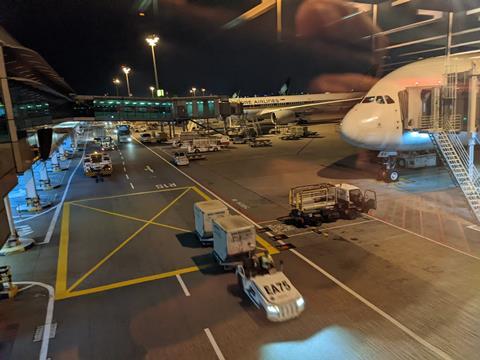International air traffic in the Asia-Pacific continued to recover in August, but global economic weakness presents challenges for airlines.
Asia-Pacific airlines carried 13.1 million passengers in August, nearly ten-fold the number they carried in August 2021, according to the Association of Asia Pacific Airlines (AAPA). Still, this represents just 39% of pre-pandemic levels.

International RPKs grew six-fold year on year, and ASKs nearly tripled. Passenger load factors jumped 42.3 percentage points to 77.9%.
“The healthy growth in international passenger traffic in the first eight months of the year shows strong travel demand from business and leisure sectors, even as persistently high inflation curtailed spending elsewhere,” says AAPA director general Subhas Menon.
“After more than two painful years into the pandemic, the region’s carriers are finally beginning to see some relief with the continuing upswing in passenger revenue, even as the cargo business remains weakened. Although cost pressures driven by high jet fuel prices and currency weakness have not abated, the rebound in travel markets will help support an improvement in the regional airline earnings performance.”
On the cargo front, August’s international FTKs fell 7.9%, while FATK’s rose 5.2%. This saw international freight load factors drop 9.5 percentage points to 66.4%.
Adds Menon: “Amid an increasingly gloomy macroeconomic outlook, the lifting of travel restrictions in the major North Asian markets of Japan, South Korea and Hong Kong will hasten the pace of the industry’s return to health, while full recovery is not expected until China is also open. The cooperation of all stakeholders is key to facilitating a smooth recovery in air travel.”


























